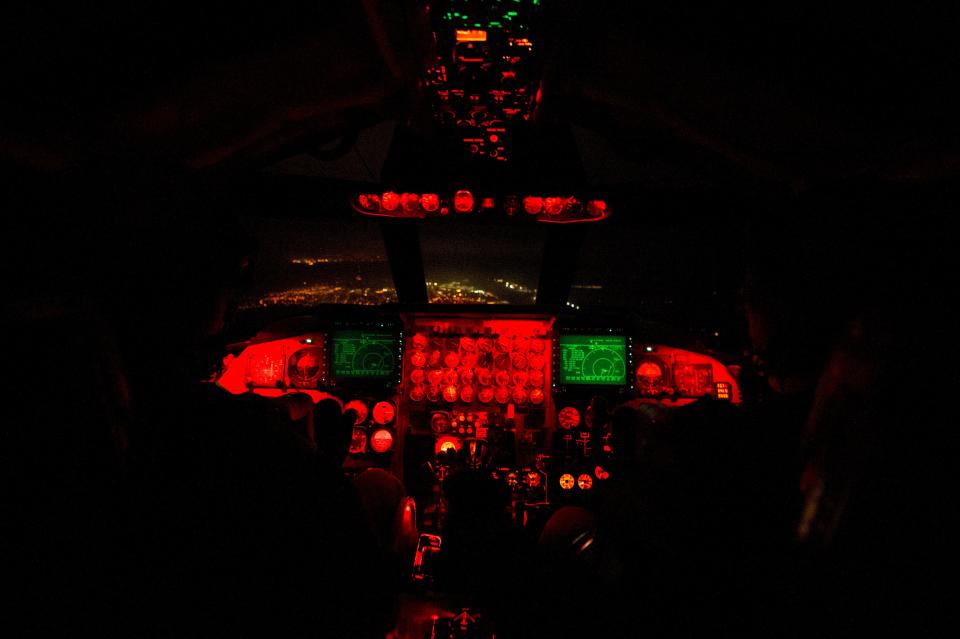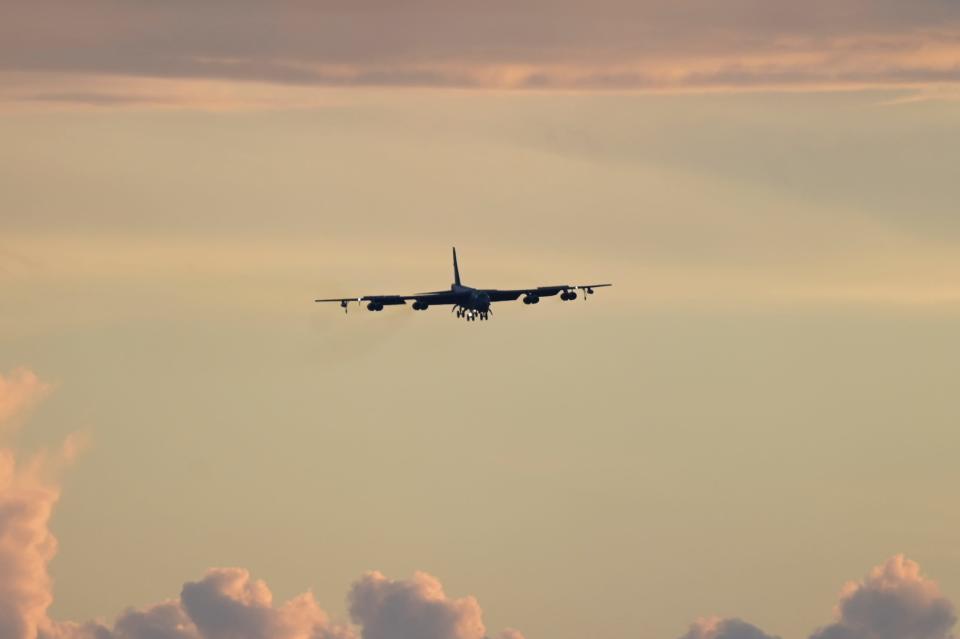Upgrades to keep the US military's oldest bombers — its B-52s — flying for a century are running into delays and rising costs, watchdog finds
Two significant upgrades to the B-52 bombers are facing issues and delays, per a new watchdog report.
The re-engined bombers, for instance, won't be operational until 2033, three years later than expected.
The upgrades are part of a plan to keep the B-52s in service until at least 2050.
Some significant upgrades to the US Air Force's 70-year-old strategic bombers are facing notable issues.
Plans to replace the engines and upgrade the radars of the B-52s now come with a higher price tag, delivery delays, and technology issues, according to a new government watchdog report.
The B-52 Commercial Engine Replacement Program, which seeks to substitute the bombers' older engines with military-configured commercial engines, is now delayed "in part due to funding shortfalls to complete the detailed design," the annual Government Accountability Office report on major US military programs said earlier this week.
Per the report, the B-52 CERP program "has worked with the contractors and submitted budget requests to support critical design review in August 2025 and initial operational capability in mid-fiscal year 2033." Delays are notably "a result of underestimating the level of funding needed to complete the detailed design activities."
That's three years later than the Air Force planned to have the re-engined planes operating. The service first announced plans in 2021 to replace the engines on its B-52s — which are out-of-production — with new Rolls-Royce-designed ones. The new engines boast improved fuel usage and easier maintenance.

Along with the delays, the cost of CERP saw a jump. The program's procurement cost, an initial $8 billion, is now up to around $9 billion, according to the Pentagon's fiscal year 2025 budget, as Inside Defense first reported. Its projected total cost is unclear.
The B-52 Radar Modernization Program also saw a bump in cost due to issues with lab testing, the GAO report said. "Costs grew by 12.6 percent since the program's initial estimate in 2021 due to additional hardware and labor for three integration labs, installation of test equipment, and an additional year of contractor support."
That upgrade involves switching the B-52s over to a new radar that provides greater range and resistance to electronic warfare countermeasures.
Along with the issues with these B-52 programs, GAO's report found that the Department of Defense was, across the board, "still struggling to deliver new technologies quickly, even while faced with constantly evolving threats."

For the B-52, the integration of new systems is critical to keeping its B-52s operational for the next few decades. The Air Force plans to keep the planes in service until 2050, almost 100 years after the first B-52 entered service. There are currently 72 active, with some in conventional roles and others still able to serve in a nuclear capacity. Those that are no longer active are in long-term storage at the Air Force's "boneyard" in Arizona.
The Air Force continues to rely on the B-52s for long-range strategic bomber missions, even though they lack the speed of the B-1 Lancers and the stealth of the B-2 Spirits.
Their formidable airframe and durable design keep them in good shape despite continued flights and operations. And updated weapons, communications, and other hardware and software keep the planes modern and capable, as well as make it easier to conduct future upgrades.
Read the original article on Business Insider

